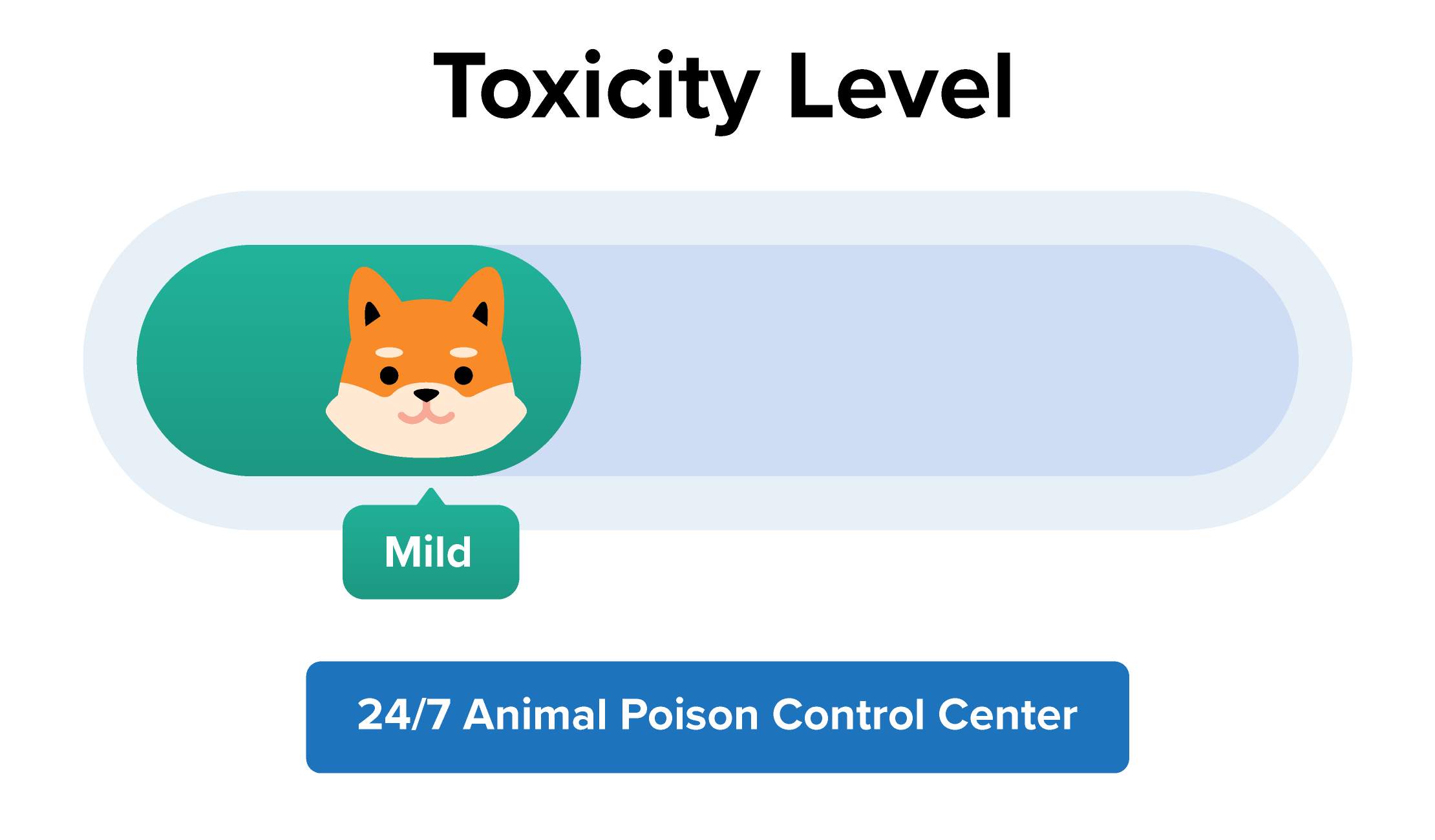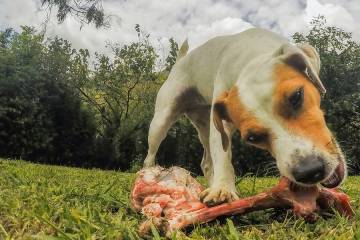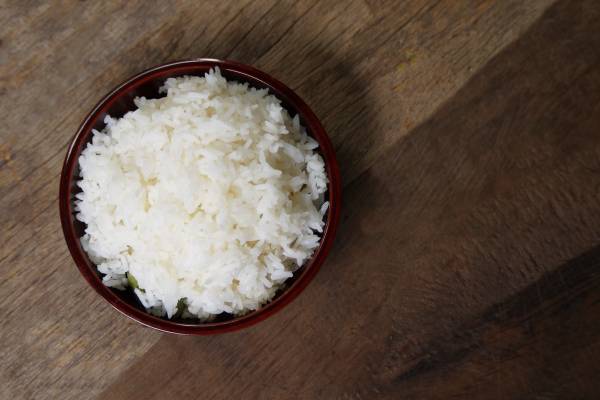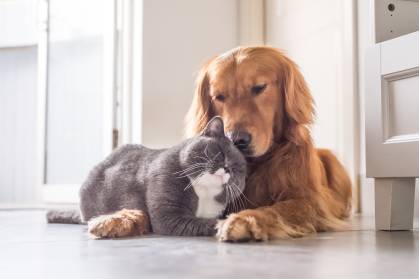Connect with a verified veterinarian in minutes. Licensed vets are available 24/7 to answer your questions. No need to worry about your furry family member.
Has your dog eaten lamb bones? Are you worried the lamb bones will make your dog sick? If so, then you’ve come to the right place!
In this article, we’ll take a look at whether or not it’s safe for dogs to eat lamb bones and symptoms to watch out for when a dog eats bones. Let’s get started!
Lamb Bones
One of the most common questions people have about bones and dogs is if the bones are safe for dogs. You may have been sitting at the dinner table one night, looked at your plate, and thought to yourself, “Can dogs eat lamb bones?” The answer is that it depends.
Dogs should never eat cooked bones. This is because bones that are cooked become brittle. When a dog chews on the bones, it’s possible the bone will splinter. The sharp pieces of bone can cause cuts in the mouth, become lodged in the throat, puncture the esophagus, or puncture and irritate the digestive tract’s lining.
Another problem is the size of the bone. If a bone is too small, a dog could swallow it whole. This can lead to choking. So, there’s a lot of controversy when it comes to giving dogs a bone or not.
Is it possible for dogs to eat lamb bones of any size and shape, and are some of them better than others? In terms of giving your dog some lamb bones, there are a lot of options. The most popular options include lamb shank bones and lamb chop bones.
Another option would be lamb rib bones. These bones count as “meaty bones,” which means they can stand being chewed for a long time without breaking.
When it comes to lamb bones, they’re very similar to beef bones. Beef bones are safe for dogs as long as they’re large and raw. What’s more, the bones are hard, which makes it more difficult for a dog to chew off smaller, sharp bits.
Lamb bones are pretty much like beef bones. If the bones are large enough and raw, then they’re safer for a dog than cooked lamb bones.
What are the Differences Between Edibles and Chewables?
One of the first things you should know is that edible bones are different from chewable bones. Edible bones are bones that dogs can eat raw, in which eating them will provide them with added nutrition. Chewable bones are large bones meant to be chewed on by your dog for a while, but not eaten. Examples are raw chicken bones. Normally, chicken bones are weak enough that the dog’s stomach acid can dissolve them easily in their digestive system. This means they won’t get a chance to become dangerous.
When it comes to edible bones, they’re good to add to your dog’s diet, but you should take care to make sure they’re safe to eat. Other than serving them up as is, you can crush them up in a blender and add them to your dog’s kibbles, for example.
This distinction is important because it will help you to understand the potential problems with lamb bones for dogs. Chewy bones are not safe for dogs to fully eat. There’s a chance the bone could become lodged in the esophagus or throat, causing choking or suffocation. The small bits of bone could also puncture the digestive tract’s lining, causing bleeding and discomfort.
If your dog is eating chewable types of bones, then it’s important to take the bones away once it gets weak enough to break. As long as the bones don’t break and your dog doesn’t swallow too many pieces at once, this will prevent any possible issues with swallowing sharp debris of the bones and choking on them later on.

Review symptoms, medications & behavior to keep your pets healthy with a Vet Online in just minutes.
Ask a Vet Live NowWhat Are the Benefits of Eating Lamb Bones as Dog Food?
Not only do the bones aid in strengthening the jaws and teeth of your dogs, but they also prevent bloating and anal gland disturbances. In addition, they’re a good supplement calcium and phosphorus.
Raw lamb bones are also a great way to help your dog maintain good oral health and prevent periodontal diseases. The enzymes stimulate the process of breaking down plaque on the teeth and scraping it on the spot where the plaque is. This happens while your dog is enjoying his bone treats.
Similarly, the nutrients that are in the bones are also very beneficial for accelerating the growth of a dog’s skeletal system. When your dog chews, they stimulate their mind and promote skeletal muscle development. This is why some dog owners, particularly those who own larger breeds, incorporate chewing bones into their dog’s diet.
What About Raw Bones?
The problem with raw bones is that they’re hard. Dogs are very strong chewers and the dog’s teeth can break the bones into smaller pieces. This means that small bits of bone could get lodged in the dog’s throat or intestines, causing internal damage to the dog’s stomach. Furthermore, sharp pieces of bone can puncture the dog’s mouth. This can cause damage and lead to anywhere between internal injuries, serious illnesses, or even death.
It is true that bones that are raw are less likely to splinter and break than bones that are cooked. But there is still a small chance that raw bones could splinter and break between your dog’s teeth, especially if your dog continues to chew on it for long periods of time. It is possible that your dog will eat the pieces that they manage to chew off.
When it comes to feeding raw bones or raw meat to dogs, there is a natural concern about the bacteria that are present on their surfaces. If you decide to give your dog some lamb bones, be sure to keep a keen eye on you and your dog’s hygiene and cleaning routines. That will reduce the risk of you and your family becoming sick from any potential bacteria.
My Dog Took Small Lamb Bones from the Garbage, Now What?
There are certain occasions where bones can do more harm to your dog than good. Some possible ways bones can injure your dogs include:
- They may break or weaken your dog’s teeth
- Your dog may start choking on them
- They can cause pancreatitis
- The sharp edges from splintered bones could pierce the intestines and stomach of your dogs.
If your dog has raided the trash and ingested small lamb bones, then you’ll need to watch for the following symptoms:
- Vomiting
- Diarrhea
- Bloody stools
- Lethargy
- Abdominal swelling & pain
- Lack of appetite
- Whimpering or audible exclamations of pain
- Constipation
These symptoms could be an indication that your dog has developed an intestinal blockage. If your dog is showing any of these symptoms, then call the vet immediately. This could be a life-threatening emergency.
Treatment of an Intestinal Blockage in Dogs
At the vet’s, they will do a complete physical on your dog, which includes lab work and imaging tests (such as x-rays). The images will allow the vet to see if there’s a blockage and where the blockage is located.
In most cases, the dog will require emergency surgery to remove the blockage caused by the lamb bones. After the surgery, your fur baby may need to stay in the hospital a day or two before he can come home.
The prognosis is excellent for dogs who receive prompt medical care for an intestinal blockage. In the future, you may want to consider purchasing a dog-safe wastebasket. This will ensure your fur baby isn’t able to get anything out of the trash for a snack!
Final Thoughts and Extra Tips
Both raw lamb bones and cooked lamb bones are a good source of meat for dogs, as well as beef or ham. They are big, heavy, and do not break easily. Your only concern is making sure to remove the bones once the bones are reduced to swallowing size.
It is important to avoid having cooked lamb bones from your dogs in order to ensure that they are safe. Furthermore, the bone must be big enough that it cannot fit in your dog’s mouth, so that he cannot swallow it. So, all bones should be cleaned of sharp edges, so that your dog will not risk cutting its tongue.
Similarly, the bone should not be large enough to have thick rims on it, because dogs can get their teeth stuck or damaged in them chewing on them. A suggestion would be that the bone should be the size of a dog’s head.
When it comes to bone, some parts of the lamb’s body are more valuable than others. Avoid T-bones, knucklebones, as well as lamp chop bones from chops from lamb cutlets. Instead, we recommend the raw lamb ribs, flaps, and tail bones for the maintenance of your dog’s teeth.
Another thing to keep in mind is that you should try to avoid leaving your dog alone with a bone for too long. They are just as quick and easy to choke as we are. In worst cases, improper eating of the bones may lead to constipation and choking. Some may require surgery to fix. Others may even lead to death.
Keeping an eye on your dog whenever they’re munching on that leftover lamb shank will help avoid unwanted accidents and maintain your dog’s health and safety.
Furthermore, if your dog is prone to stomach problems, diarrhea, or irritable bowels, it might be best to refrain from giving them bones at all. Instead, look for safe alternatives. For example, you can try feeding your dogs rawhide chews and rawhide bones.
Connect with a verified veterinarian in minutes. Licensed vets are available 24/7 to answer your questions. No need to worry about your furry family member.

Kyoko
Kyoko is from a family of 3 and moved to New York with her parents and siblings when she was 13. Kyoko is fond of spending a great amount of time with pets, specifically her beagle Luna and cat Missy. Her boyfriend often complains that she spends too much time giving attention to their animals. Kyoko has written dozens of articles concerning pets and is aiming at owning a pet shop one day!
Review symptoms, medications & behavior to keep your pets healthy with a Vet Online in just minutes.
Ask a Vet Live Now





